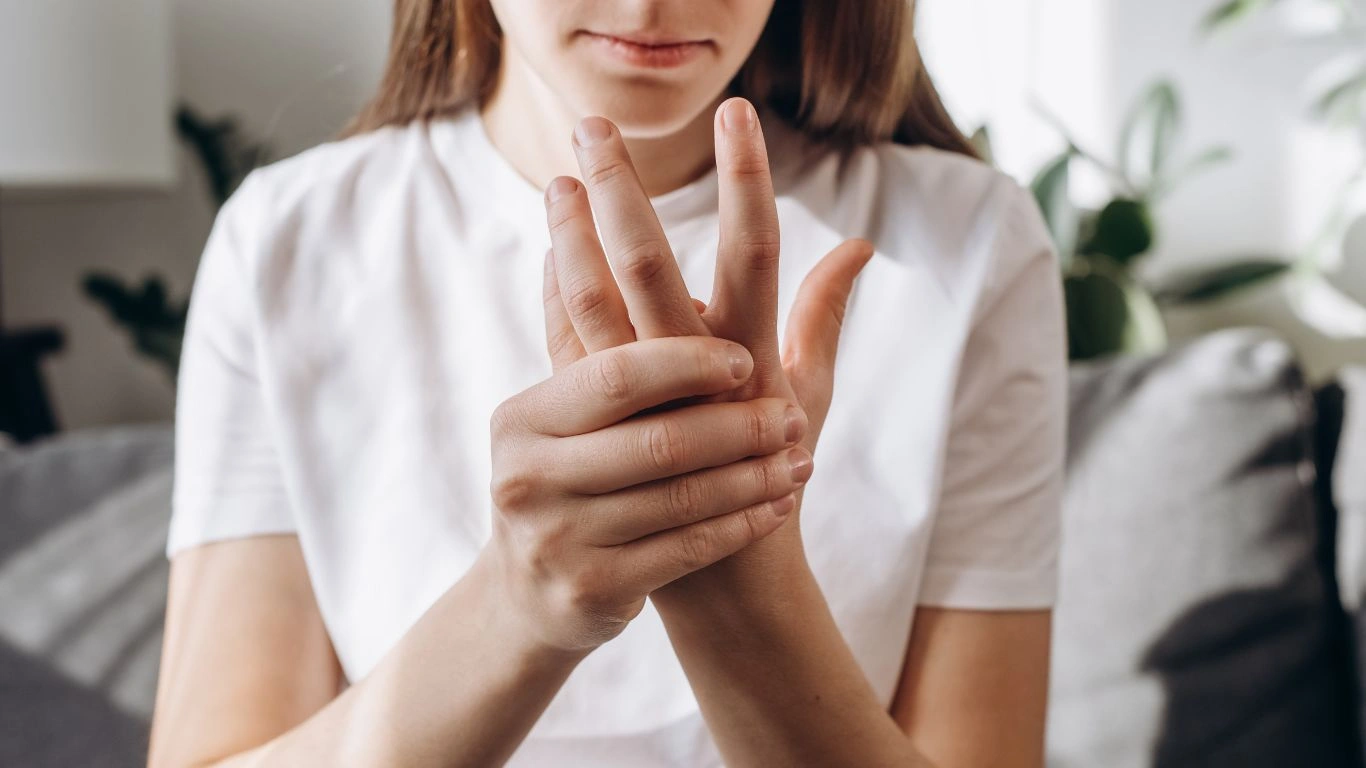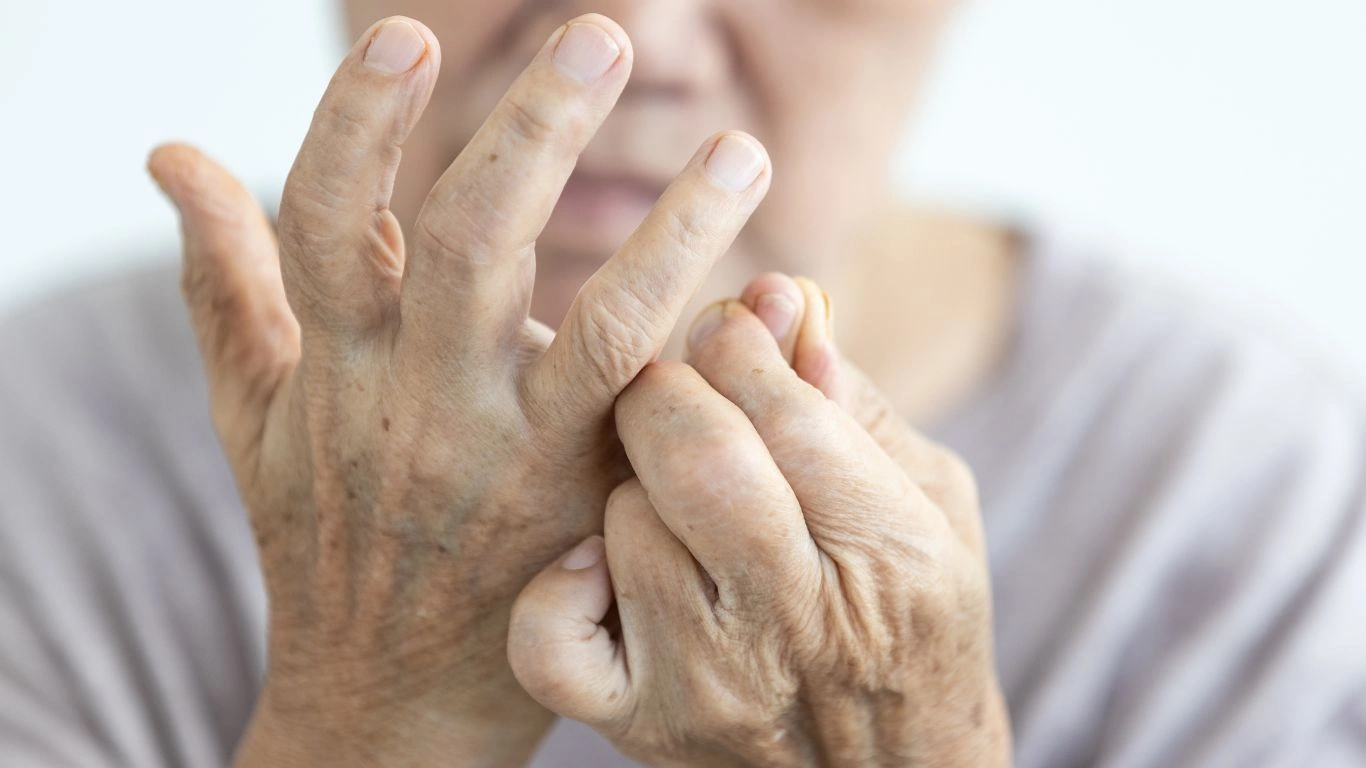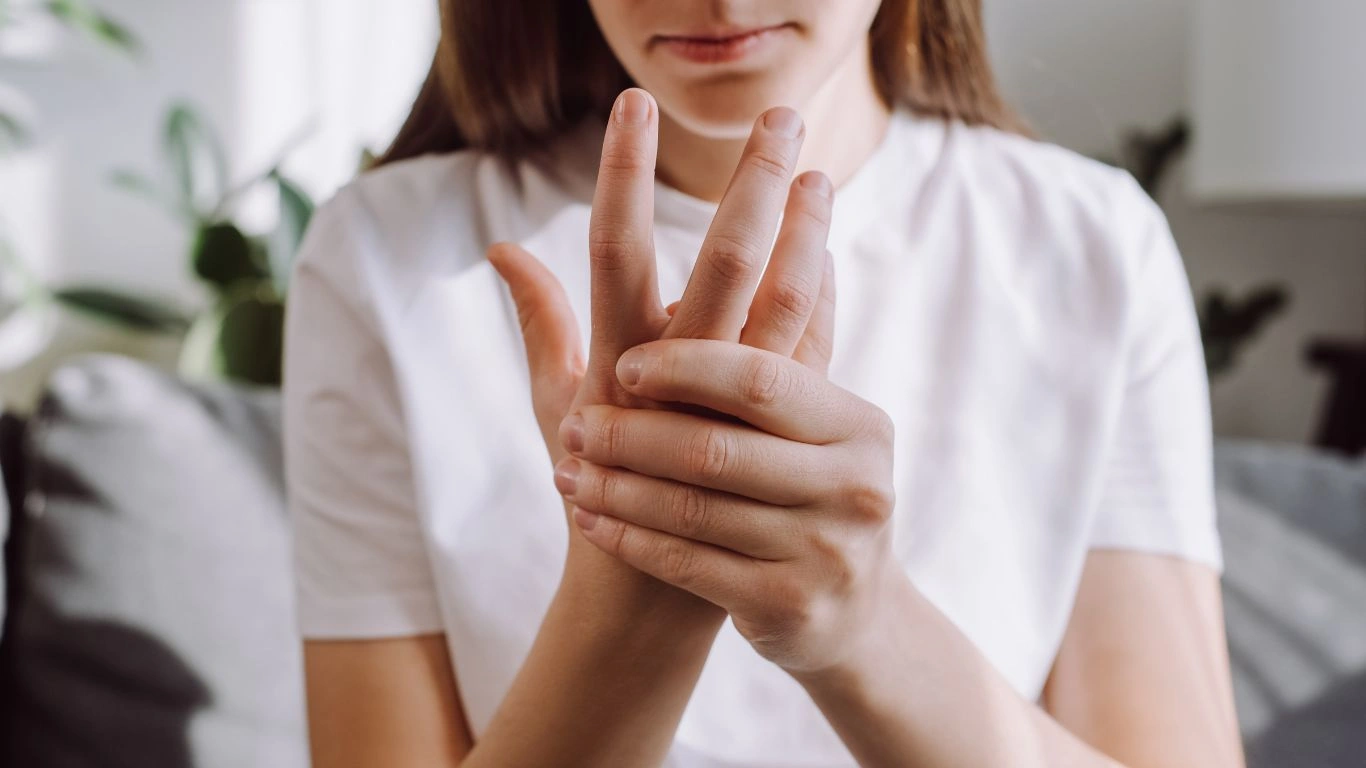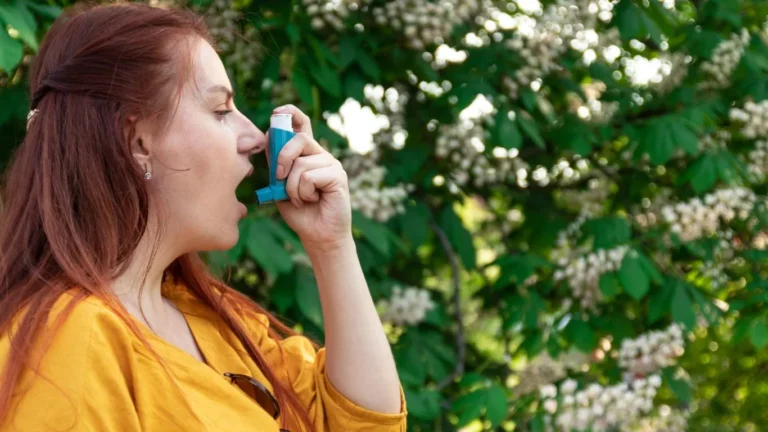How to Handle Rheumatoid Arthritis Flare-Ups Naturally and Effectively
As someone who has spent years working closely with individuals battling rheumatoid arthritis (RA), I can tell you that flare-ups are among the most challenging and unpredictable parts of managing the condition. For those living with RA, knowing how to handle rheumatoid arthritis flare-ups naturally can make a world of difference in day-to-day life.
While conventional treatments like medication are often necessary, many individuals seek natural ways to manage flare-ups and improve their quality of life. I’ve seen countless patients experience significant relief by incorporating simple, natural strategies that complement their medical treatment plans. In this post, I’m going to dive deep into some of the most effective ways you can manage flare-ups naturally, and share a few personal insights that I’ve learned over the years.
Understanding What Triggers Rheumatoid Arthritis Flare-Ups

Before we dive into the natural remedies for managing rheumatoid arthritis flare-ups, it’s important to understand what actually triggers these painful episodes. RA is an autoimmune disease where your immune system mistakenly attacks the joints, leading to inflammation and pain. However, flare-ups don’t always have a clear cause, and they can come on suddenly, often without warning. But there are a few common triggers that many RA patients experience:
- Stress: Emotional stress can be a huge trigger for RA flare-ups. Stress impacts your body’s inflammatory response, making it harder for your immune system to keep things in check.
- Infections: A common cold, the flu, or even minor infections can worsen symptoms.
- Diet: Certain foods can contribute to inflammation, exacerbating symptoms. This varies by individual, but sugar, processed foods, and red meat are often culprits.
- Weather: Cold, damp weather can make joint pain worse for some people with RA.
- Overexertion: Physical stress, whether from intense exercise or doing too much physically, can trigger flare-ups in some people.
Being aware of these triggers is the first step toward minimizing their impact. Managing stress, practicing good hygiene, and paying attention to your diet are all proactive ways to reduce the likelihood of flare-ups. But sometimes, even when we do everything right, a flare-up still happens. That’s when it’s time to bring in some natural remedies.
Natural Ways to Manage Rheumatoid Arthritis Flare-Ups

While there’s no magic pill that can make rheumatoid arthritis go away, many natural approaches can help alleviate the pain and inflammation associated with flare-ups. Over the years, I’ve seen patients experience relief through a variety of lifestyle changes, diet adjustments, and holistic treatments. Below are some of the most effective natural strategies I recommend.
1. Anti-Inflammatory Diet
One of the first things I tell my patients when they ask how to handle rheumatoid arthritis flare-ups naturally is to take a close look at their diet. Certain foods can have a powerful impact on inflammation in the body. Incorporating more anti-inflammatory foods can help manage flare-ups and improve overall well-being. Some of the best foods for reducing inflammation include:
- Fatty Fish: Salmon, sardines, and mackerel are rich in omega-3 fatty acids, which are known for their anti-inflammatory properties.
- Berries: Blueberries, strawberries, and raspberries are high in antioxidants, which help fight inflammation.
- Leafy Greens: Kale, spinach, and other dark leafy greens are packed with vitamins and minerals that help reduce inflammation.
- Nuts and Seeds: Walnuts, almonds, and chia seeds are great sources of healthy fats that can calm inflammation.
- Turmeric: Known for its active compound curcumin, turmeric has strong anti-inflammatory effects that can benefit RA patients.
At the same time, it’s just as important to avoid foods that can contribute to inflammation. Many of my patients find that cutting back on processed foods, sugar, and dairy can make a noticeable difference in their flare-ups.
2. Exercise and Gentle Movement
Exercise may seem like an odd recommendation when you’re in the middle of a flare-up, but gentle movement can actually be incredibly helpful for managing symptoms. I’ve seen first-hand how regular, low-impact exercise can strengthen the muscles around the joints, improve flexibility, and reduce pain. The key here is to choose the right kind of exercise—too much strenuous activity can exacerbate symptoms, while moderate and consistent movement can be healing.
Some great forms of low-impact exercise for RA patients include:
- Swimming or Water Aerobics: The buoyancy of water takes pressure off the joints while providing resistance for a full-body workout.
- Yoga: Yoga helps improve flexibility, strength, and stress reduction. Certain poses can also help with joint mobility and reduce stiffness.
- Walking: A simple, low-impact activity that helps maintain overall mobility without overstraining the joints.
If you’re unsure about what exercises are right for you, I always recommend consulting a physical therapist who can create a customized program based on your needs and limitations.
3. Hot and Cold Therapy

One of the quickest ways to find relief from the pain of a rheumatoid arthritis flare-up is by using hot and cold therapy. I’ve had many patients tell me how much relief they get from this simple, natural method. Both heat and cold have distinct benefits for RA symptoms, and you can alternate between the two depending on what works best for you.
- Cold Therapy: Applying a cold pack to the affected joints helps numb the area and reduce inflammation. This can be especially effective if you’re experiencing a sudden flare-up.
- Heat Therapy: A warm compress or heating pad can help relax tense muscles and alleviate joint stiffness, especially in the morning.
It’s important to never apply heat or cold for too long—about 15-20 minutes at a time is usually sufficient. Make sure to always have a barrier between the heat/cold source and your skin to avoid injury.
Managing Stress and Emotional Health
One often overlooked aspect of managing rheumatoid arthritis flare-ups is emotional well-being. Stress and anxiety can exacerbate symptoms, and over time, this can create a vicious cycle where emotional distress worsens physical pain. Learning how to manage stress is essential for anyone living with RA.
- Meditation: Regular mindfulness meditation can help lower stress and improve pain management.
- Deep Breathing Exercises: Simple deep breathing exercises can help calm the nervous system and reduce pain sensitivity.
- Therapy or Support Groups: Speaking with a counselor or joining a support group can provide valuable emotional relief and coping strategies.
When your mind and body are both at ease, your overall experience with RA will improve. Over time, stress management can play a pivotal role in how you handle rheumatoid arthritis flare-ups naturally.
Incorporating Herbal Remedies for RA Relief

Another area I’ve explored with many of my patients is the use of herbal remedies. Over the years, herbal treatments have gained recognition for their ability to alleviate inflammation and pain associated with rheumatoid arthritis flare-ups. While these remedies aren’t a replacement for conventional medication, they can offer supportive relief when incorporated into a comprehensive treatment plan.
Several herbs have shown promising anti-inflammatory and analgesic (pain-relieving) effects. Let’s take a closer look at some of the best options:
1. Ginger
Ginger isn’t just a tasty addition to your meals; it has potent anti-inflammatory properties. In fact, ginger is often used in traditional medicine to manage a variety of inflammatory conditions, including RA. The active compounds in ginger, such as gingerol, have been shown to reduce pain and inflammation in clinical studies. I’ve recommended ginger tea to many of my patients as a natural remedy during flare-ups, and they often report feeling a sense of relief after consistent use.
You can use fresh ginger, ginger tea, or even ginger supplements—whichever fits best into your daily routine. Just be sure to talk to your doctor before adding supplements to your regimen, especially if you’re already on medication for RA.
2. Boswellia (Frankincense)
Boswellia, also known as frankincense, is another herb that has caught my attention for its potential benefits in treating RA. Known for its anti-inflammatory properties, Boswellia has been studied extensively and is often used in Ayurvedic medicine. Some studies suggest that it can help reduce joint pain and swelling. It works by inhibiting certain enzymes that are responsible for causing inflammation in the body.
Incorporating Boswellia into your RA management plan could provide noticeable improvements in mobility and pain reduction. You can find Boswellia in supplement form, but again, it’s best to consult with your healthcare provider to make sure it aligns with your treatment plan.
3. Turmeric
Turmeric is probably one of the most well-known herbs when it comes to fighting inflammation, and for good reason. It contains an active compound called curcumin, which has powerful anti-inflammatory and antioxidant properties. I’ve seen patients who incorporate turmeric into their diet experience less joint stiffness and pain.
You can use turmeric in cooking, but it’s much more effective when combined with black pepper, which helps the body absorb curcumin more efficiently. Turmeric supplements are also widely available, but I always recommend starting with the natural form—whether it’s fresh turmeric root or powdered turmeric—before considering supplements. And don’t forget: consistency is key!
Consider Acupuncture for RA Pain Relief

Acupuncture is another alternative treatment that has gained popularity for managing rheumatoid arthritis flare-ups. While acupuncture isn’t typically considered a first-line treatment, it’s one of the natural therapies I frequently suggest to my patients. I’ve seen some incredible results, especially when it comes to pain management and improved mobility during flare-ups.
Acupuncture works by stimulating specific points on the body with fine needles. These points correspond to energy pathways that, when activated, can help relieve pain and inflammation. Some of my patients have reported a noticeable reduction in joint stiffness and less pain after just a few sessions. If you’re open to trying something new, acupuncture could be a viable natural option for easing RA flare-ups.
Is Acupuncture Right for You?
Acupuncture isn’t for everyone, so it’s essential to consider if it’s a good fit for your lifestyle and pain management plan. I always recommend working with a licensed acupuncturist, and discussing this treatment with your doctor to ensure it complements your overall RA management strategy. Whether you choose acupuncture for long-term management or for flare-ups specifically, it can be a valuable addition to your RA toolkit.
Hydrotherapy: The Benefits of Water-Based Treatments
Hydrotherapy, or water-based therapy, is another fantastic method I’ve recommended to patients dealing with rheumatoid arthritis flare-ups. When I mention water therapy, many people picture swimming in a pool, but there’s much more to it. Water can provide gentle resistance, reduce stress on your joints, and enhance your overall sense of well-being.
Types of Hydrotherapy for RA
Hydrotherapy comes in several forms, each tailored to different needs. I’ve seen people benefit from various water-based treatments, and they often report feeling less pain and stiffness after just a few sessions:
- Warm Water Therapy: Submerging your body in warm water can soothe aching joints and increase blood flow. Many find relief in warm pools designed specifically for arthritis patients. The buoyancy of the water reduces the pressure on your joints, allowing for more movement and less pain.
- Cold Water Therapy: Cold baths or cold packs can help reduce inflammation and numb the pain associated with a flare-up. This can be particularly effective if you’re dealing with an acute flare that’s causing swelling and intense discomfort.
- Water Aerobics: Gentle exercises in water help increase flexibility, improve strength, and reduce pain. The resistance of water makes it an ideal setting for low-impact exercises like stretching and strengthening movements.
If you live near a facility with a therapeutic pool, it may be worth exploring water therapy as part of your RA management. It’s gentle on the joints, helps reduce inflammation, and promotes flexibility and mobility. Just be sure to consult with your doctor before starting any new form of therapy, particularly if you have other health concerns.
Massage Therapy: A Soothing Way to Ease RA Pain

Massage therapy is another natural treatment that can work wonders for reducing RA flare-up symptoms. While it’s not a cure, massage can help relax tight muscles, ease joint stiffness, and improve circulation—especially in areas where flare-ups are most prevalent. I’ve seen many of my patients benefit from regular massage therapy, as it provides much-needed relief during a flare-up.
Therapists trained in rheumatoid arthritis-specific techniques are especially effective because they understand the needs of RA patients. It’s essential to work with someone who knows how to adjust pressure and techniques based on your specific condition. When done correctly, massage therapy can reduce inflammation, promote relaxation, and increase your range of motion during a flare-up.
Always communicate openly with your massage therapist about which areas of your body are most sensitive, and be sure to listen to your body throughout the session. Too much pressure or an overly aggressive massage can have the opposite effect, so it’s important to proceed with caution.
Incorporating Mindfulness and Meditation Into Your RA Management

Another aspect of handling rheumatoid arthritis flare-ups naturally that I’ve seen make a significant difference is incorporating mindfulness and meditation. I’ll admit, when I first started working with RA patients, I wasn’t entirely convinced that meditation could help with physical pain. But over the years, I’ve witnessed firsthand how powerful the mind-body connection can be when it comes to managing chronic conditions like RA.
When you live with the constant threat of flare-ups, your mental and emotional state can take a big toll on your physical health. Anxiety and stress can increase inflammation, making it harder for your body to cope with the symptoms of RA. That’s where mindfulness practices like meditation come in. These practices can help calm the mind, reduce stress, and even alleviate pain. In my experience, many RA patients find that meditation helps them feel more in control and reduces the intensity of flare-ups over time.
1. The Power of Mindfulness
Mindfulness is all about staying present in the moment and accepting things as they are, without judgment. For someone with RA, mindfulness can help you manage the anxiety that often accompanies a flare-up. Instead of focusing on the pain and feeling overwhelmed, mindfulness encourages you to breathe, focus on your body, and shift your perspective. Over time, you can train your brain to respond to flare-ups in a calmer, more balanced way.
Some simple mindfulness exercises I recommend include body scans, where you focus on each part of your body, from your toes to your head, noticing any areas of tension or pain without judgment. This practice can help you tune into your body and find ways to relax areas that may be holding onto stress or pain. It can also help with your awareness of flare-ups, allowing you to detect changes early and manage them more effectively.
2. Meditation for Pain Management
Meditation has been studied extensively for its impact on chronic pain, and there’s solid evidence showing that it can help reduce the perception of pain. I often suggest guided meditation or deep-breathing exercises to my RA patients to help them manage their flare-ups. These practices activate the body’s relaxation response, which can help counteract the effects of pain and inflammation.
To get started, try practicing 10 to 15 minutes of meditation each day. You can find numerous apps or online resources that guide you through various techniques, such as focused breathing or loving-kindness meditation. Over time, these practices can help you manage not only your physical symptoms but also the emotional toll that RA can take on your mental health.
Sleep: A Crucial Element for Managing RA Flare-Ups
Let’s talk about something that often gets overlooked when discussing natural ways to handle rheumatoid arthritis flare-ups: sleep. As a health professional, I can’t stress enough how important it is to get quality sleep when living with RA. Lack of sleep doesn’t just make you tired—it can actually exacerbate your symptoms. Studies have shown that poor sleep can lead to higher levels of inflammation in the body, which in turn can make RA flare-ups worse.
When I speak with my patients, I emphasize the importance of developing good sleep hygiene. While this may seem unrelated to managing flare-ups, the truth is that a good night’s rest plays a huge role in reducing inflammation and promoting healing. If you’re not getting enough sleep, your body won’t be able to recover fully, and you might be more susceptible to experiencing a flare-up.
1. Establishing a Bedtime Routine
One of the first things I recommend to my patients is creating a bedtime routine. Going to bed at the same time every night and waking up at the same time each morning can help regulate your body’s internal clock. This consistency helps improve the quality of your sleep, which can reduce the stress your body experiences. Some simple tips for improving sleep hygiene include:
- Limit caffeine intake: Try to avoid caffeine in the afternoon and evening, as it can interfere with falling asleep.
- Optimize your sleep environment: Ensure that your bedroom is cool, dark, and quiet. Consider using earplugs or a white noise machine if noise is an issue.
- Relax before bed: Engage in calming activities like reading, taking a warm bath, or practicing relaxation exercises before turning in.
- Limit screen time: Avoid using your phone, computer, or TV before bed, as the blue light emitted from screens can interfere with your body’s natural sleep cycle.
When you consistently prioritize quality sleep, you’re giving your body the best chance to heal and manage flare-ups naturally.
Creating a Holistic RA Management Plan
When it comes to handling rheumatoid arthritis flare-ups naturally, there’s no one-size-fits-all solution. Each person’s experience with RA is unique, which is why it’s essential to create a personalized, holistic management plan. A holistic approach focuses not only on physical health but also on emotional, mental, and social well-being. This is something I emphasize to all of my patients—RA management is about balancing different aspects of your life to keep flare-ups under control.
1. Combining Conventional and Natural Treatments
One of the biggest mistakes I’ve seen is the idea that you have to choose between conventional medicine and natural treatments. In my experience, the most effective way to manage RA is by combining both. Medications like disease-modifying antirheumatic drugs (DMARDs) and biologics can help control the disease’s progression, while natural treatments like diet changes, exercise, and mindfulness can support overall well-being and reduce flare-ups.
It’s important to work closely with your doctor to develop a plan that incorporates both conventional treatments and natural remedies. Over time, this approach can lead to a more balanced, manageable lifestyle where you feel empowered to handle flare-ups as they arise.
2. Building a Support System
Don’t underestimate the importance of a strong support system when living with RA. I’ve seen how much my patients benefit from having people around them who understand what they’re going through. Whether it’s family, friends, support groups, or even online communities, sharing your experiences with others can reduce feelings of isolation and help you stay motivated in your treatment plan.
Connecting with others who understand the challenges of RA can also provide you with new strategies for handling flare-ups. Sometimes, the best advice comes from someone who has walked in your shoes.
References
For more information on managing rheumatoid arthritis, check out these trusted resources:
Disclaimer: The information provided in this article is for general informational purposes only and is not intended as medical advice. Please consult your healthcare provider before making any changes to your treatment plan or incorporating new natural remedies into your routine.

Tarra Nugroho is a dedicated Nurse Practitioner with a strong foundation in family and preventive care. She brings both compassion and clinical expertise to her practice, focusing on patient-centered care and health education. As a contributor to Healthusias.com, Tarra translates medical knowledge into clear, empowering articles on topics like women’s health, chronic disease management, and lifestyle medicine. Her mission is simple: help people feel seen, heard, and informed—both in the clinic and through the content she creates. When she’s not caring for patients, Tarra enjoys weekend hikes, plant-based cooking, and curling up with a good health podcast.






